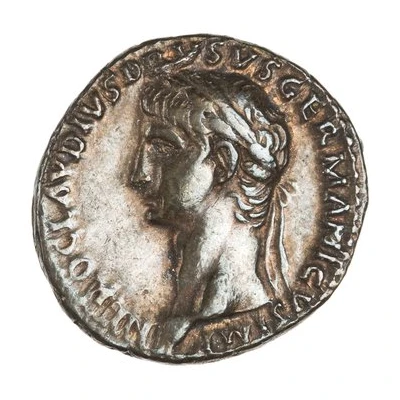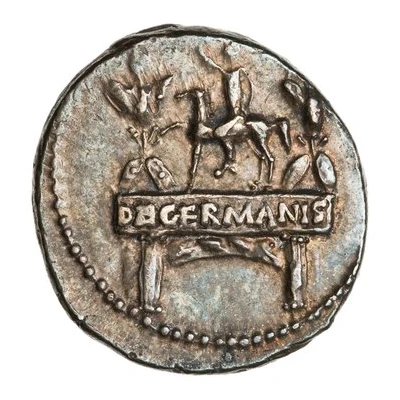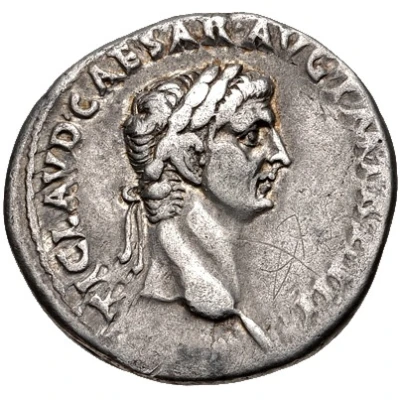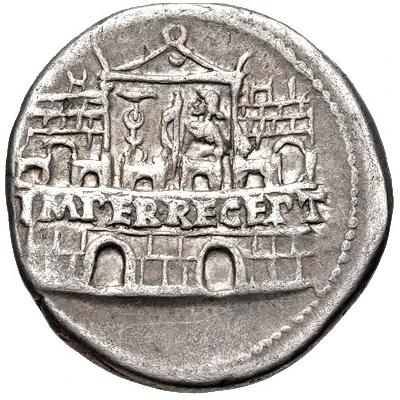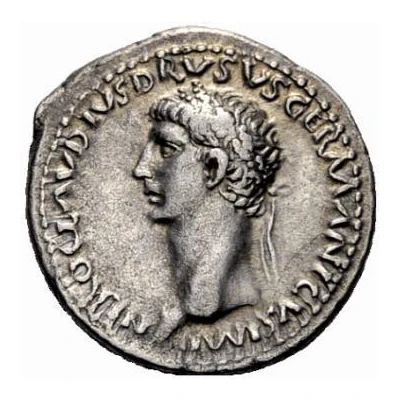
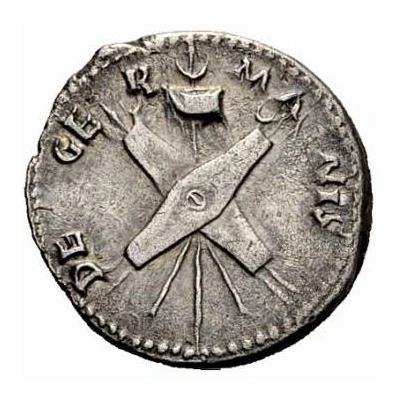

© H. D. Rauch
Denarius - Drusus the Elder DE GERMANIS
| Silver | 3.2 g | 19 mm |
| Issuer | Rome › Roman Empire (27 BC - 395 AD) |
|---|---|
| Emperor | Claudius (Tiberius Claudius Drusus) (41-54) |
| Type | Standard circulation coin |
| Years | 41-45 |
| Value | 1 Denarius |
| Currency | Denarius, Reform of Augustus (27 BC – AD 215) |
| Composition | Silver |
| Weight | 3.2 g |
| Diameter | 19 mm |
| Shape | Round (irregular) |
| Technique | Hammered |
| Demonetized | Yes |
| Updated | 2024-10-06 |
| Numista | N#246959 |
|---|---|
| Rarity index | 100% |
Reverse
Two shields, two pairs of spears, two trumpets, all crossed; behind; vexillum with flag which is still
Script: Latin
Lettering: DE GERMANIS
Translation:
Devictus Germanis.
Conquered the Germans.
Comment
Mass varies: 2.55–3.92 g;Source: Online Coins of the Roman Empire (OCRE)
Although RIC specifically describes the banner as still on the denarius module, sales archives show there are two distinct varieties - one with banner still, and one in motion, as on this specimen and the description for the aureus (RIC 73). The wreath worn by Drusus, misidentified as a laurel wreath until recognized as oak by D. Salzmann in 1976, was presumably a posthumous honor voted to him by the Senate. The reverse on this issue celebrates his German campaign, for which his eldest son was renamed Germanicus.
Interesting fact
The Denarius - Drusus the Elder (DE GERMANIS) coin features an image of a wild boar on its reverse side, which is an unusual choice for a Roman coin. It is believed that the boar was included to represent Drusus' successful military campaigns in Germania, where he was known for his bravery and skill in hunting. This coin is a unique representation of the intersection of military prowess and natural imagery in Roman coinage.
